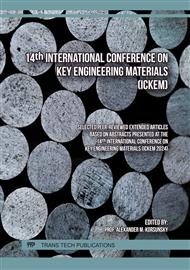p.25
p.33
p.39
p.49
p.57
p.65
p.73
p.83
p.93
Performance Assessment of Basic Oxygen Furnace Slag (BOFS) as an Ice-Melting Abrasive Material
Abstract:
Abrasives play a crucial role in surface blasting, especially in cold climates, where snow and ice significantly challenge transportation infrastructure and road safety. The main purpose of this research is to address the critical need for effective and sustainable winter maintenance techniques. This study examined the possibilities of Basic Oxygen Furnace Slag (BOFS) as a substitute (an abrasive substance) for conventional aggregates in ice-melting applications. Thus, this research assessed the physical properties of BOFS, such as absorption capacity, tested at -5°C, and aggregate angularity test, and designed for evaluation of the surface texture, friction, and percentage of fractured faces in uncompacted voids (SSD%) of the aggregates. Moreover, the potential use of a blend of BOFS with de-icing salts, specifically sodium chloride (NaCl) and calcium chloride (CaCl2), was investigated as an effective ice-melting agent. For this purpose, three tests were carried out: the petri dish test according to SHRP H-205.1, the polishing ice melting test using a modified ASTM C 944 (rotational cutter), and the surface temperature measurement test. By assessing the performance of BOFS, our goal was to justify its efficacy, offering a practical alternative for regions experiencing severe winter conditions. Eventually, the findings from this study assert that BOFS can be used for surface blasting, indicating its potential as a substitute for traditional abrasives.
Info:
Periodical:
Pages:
57-64
Citation:
Online since:
September 2024
Price:
Сopyright:
© 2024 Trans Tech Publications Ltd. All Rights Reserved
Share:
Citation:



